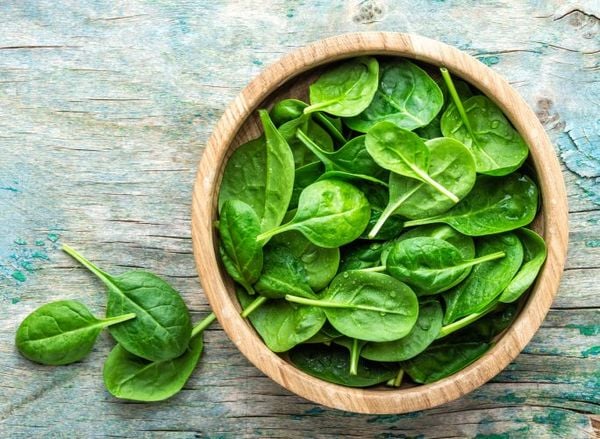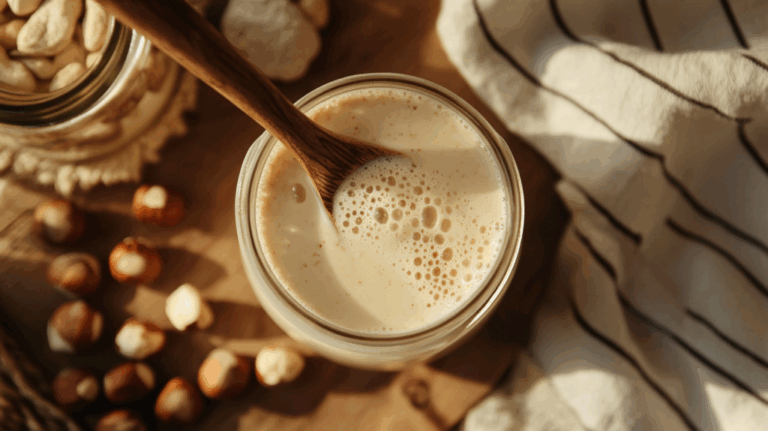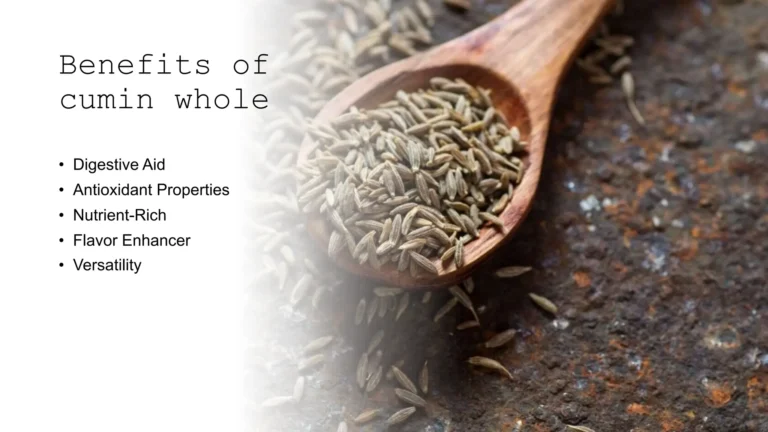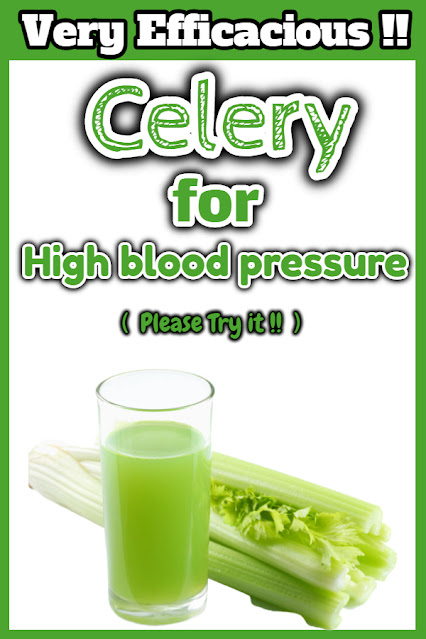Nature’s Blood Pressure Regulator: The Nitrate Secret of Spinach
In the grand tapestry of human history, few substances have undergone such a dramatic re-evaluation as the humble nitrate. Once viewed with suspicion, often associated with industrial processes, explosives, or even as a controversial food additive, nitrates are now experiencing a renaissance, particularly when consumed in their natural, botanical form. At the heart of this transformation lies an unassuming leafy green, a perennial staple of kitchens and gardens worldwide: spinach. This is the story of how spinach, through its rich nitrate content, orchestrates a silent, sophisticated symphony within our bodies, emerging as one of nature’s most potent, yet often overlooked, regulators of blood pressure. It is a tale of scientific discovery, biochemical elegance, and a profound re-appreciation for the wisdom embedded in the plant kingdom.
The Silent Epidemic and the Quest for Solutions
The modern world grapples with a silent, pervasive epidemic: hypertension, or high blood pressure. Affecting billions globally, it is a leading risk factor for heart attack, stroke, kidney disease, and dementia. Its insidious nature lies in its often asymptomatic progression, earning it the moniker "the silent killer." While pharmaceutical interventions have revolutionized the management of hypertension, the relentless pursuit for sustainable, natural, and accessible solutions continues. The ideal scenario involves not just treating symptoms, but fostering a state of robust health, often starting with the most fundamental aspect of human existence: our diet.
For millennia, humans intuitively understood the connection between food and well-being. Ancient healers prescribed specific foods for various ailments, recognizing the subtle yet profound power of nature’s bounty. Yet, in the era of reductionist science, this wisdom was often dismissed as anecdotal. The challenge for contemporary research has been to bridge this gap, to scientifically validate the therapeutic potential of whole foods, deciphering the intricate molecular mechanisms that underpin their beneficial effects. It is within this exciting frontier that spinach, and its nitrate secret, has risen to prominence, offering a compelling narrative of how a simple vegetable can wield complex physiological power.
Unveiling the "Nitrate Secret": A Paradigm Shift
For decades, the word "nitrate" often conjured negative connotations. Its presence in cured meats was linked to potential health concerns, and agricultural runoff containing nitrates raised environmental alarms. This historical backdrop made the scientific community’s journey to embrace dietary nitrates as beneficial a particularly intriguing one, marking a significant paradigm shift.
The story truly begins not with spinach itself, but with a foundational discovery concerning a tiny, enigmatic molecule: nitric oxide (NO). In the late 1980s, a trio of scientists – Robert Furchgott, Louis Ignarro, and Ferid Murad – independently elucidated the role of nitric oxide as a crucial signaling molecule in the cardiovascular system. They discovered that NO, produced by the endothelial cells lining our blood vessels, acts as a potent vasodilator, relaxing smooth muscle and expanding arteries, thereby lowering blood pressure and improving blood flow. This groundbreaking work earned them the Nobel Prize in Physiology or Medicine in 1998, forever changing our understanding of cardiovascular health.
Initially, the primary pathway for NO production was understood to be the L-arginine/nitric oxide synthase (NOS) pathway. This endogenous system, while vital, can become compromised in conditions like hypertension, diabetes, and aging, leading to a state of "endothelial dysfunction" where the body struggles to produce enough NO. This realization sparked a critical question: If the body’s intrinsic NO production is impaired, could there be an alternative, exogenous source?
Enter the world of dietary nitrates. For years, scientists had observed that vegetarian diets were often associated with lower blood pressure. Could there be a specific compound responsible? Research began to focus on inorganic nitrate (NO3-), abundant in leafy green vegetables and beetroot. Initially, it was believed that dietary nitrates were merely inert, circulating in the body before being excreted. However, a series of elegant studies began to uncover a hidden biochemical pathway, a "nitrate-nitrite-NO pathway," that operates in parallel to the L-arginine/NOS system, offering a crucial backup and even a primary source of NO under certain physiological conditions. This discovery was nothing short of revolutionary, transforming the perception of dietary nitrates from inert to indispensable.
The Biochemical Symphony: From Spinach to NO
The journey of nitrate from a spinach leaf to a potent blood pressure regulator is a fascinating example of biochemical ingenuity, involving a symbiotic relationship between humans and their oral microbiome. It’s a multi-step process, a finely tuned symphony that orchestrates vasodilation and cardiovascular protection.
Step 1: Ingestion and Absorption of Dietary Nitrate (NO3-)
When we consume spinach, its high concentration of inorganic nitrate (NO3-) is readily absorbed in the upper gastrointestinal tract. Unlike other nutrients that undergo extensive digestion, nitrate is quickly taken up into the bloodstream.
Step 2: The Entero-Salivary Circulation – A Crucial Detour
This is where the story takes an unexpected turn. Approximately 25% of the absorbed nitrate in the bloodstream is actively concentrated by the salivary glands and secreted into saliva. This entero-salivary circulation ensures a high concentration of nitrate in the oral cavity, setting the stage for the next critical step.
Step 3: The Oral Microbiome – Unsung Heroes
Here lies one of the most remarkable aspects of the nitrate pathway: the indispensable role of commensal bacteria residing in the anaerobic crypts of our tongue. These specific bacteria possess an enzyme called nitrate reductase. In a process vital for the conversion, these bacteria reduce inorganic nitrate (NO3-) to nitrite (NO2-). Without these microscopic allies, the entire pathway would largely grind to a halt. This symbiotic relationship highlights the profound interconnectedness of human physiology with its microbial inhabitants. Swallowing antibacterial mouthwash, for instance, can wipe out these crucial bacteria, effectively blocking the conversion and negating the blood pressure-lowering effects of nitrate-rich foods.
Step 4: Nitrite (NO2-) – The Key Intermediate
Once converted to nitrite in the mouth, the saliva, now rich in NO2-, is swallowed. This swallowed nitrite then travels down to the acidic environment of the stomach.
Step 5: Acidic Conversion and Systemic Distribution
In the highly acidic milieu of the stomach, nitrite (NO2-) is rapidly protonated and chemically reduced to nitric oxide (NO). This acidic reduction is a non-enzymatic process, creating a burst of NO that can be absorbed directly from the stomach or further processed.
Crucially, the remaining nitrite that escapes conversion in the stomach is absorbed into the bloodstream. This systemic nitrite pool then circulates throughout the body, acting as a critical reservoir for NO generation.
Step 6: Nitrite to Nitric Oxide (NO) – Where the Magic Happens
The conversion of systemic nitrite to nitric oxide occurs in various tissues, particularly under conditions of low oxygen (hypoxia) or low pH (acidosis), which are often characteristic of ischemic tissues or during intense exercise. Several endogenous reductases, including deoxyhemoglobin, deoxymyoglobin, xanthine oxidoreductase, and components of the mitochondrial electron transport chain, can facilitate this conversion. This makes dietary nitrate a particularly potent source of NO precisely when and where it’s needed most – in tissues experiencing metabolic stress.
The Mechanisms of NO Action:
Once generated, nitric oxide exerts its profound effects on the cardiovascular system through several mechanisms:
- Vasodilation: NO diffuses into vascular smooth muscle cells, activating soluble guanylyl cyclase (sGC), which leads to an increase in cyclic guanosine monophosphate (cGMP). cGMP then triggers a cascade of events resulting in the relaxation of smooth muscle and subsequent vasodilation, lowering blood pressure.
- Anti-platelet aggregation: NO helps prevent platelets from clumping together, reducing the risk of clot formation and improving blood fluidity.
- Anti-inflammatory effects: NO can modulate inflammatory responses within the endothelium, contributing to overall cardiovascular health.
- Mitochondrial respiration: Emerging research suggests NO can also fine-tune mitochondrial function, improving energy efficiency within cells.
In essence, dietary nitrates provide an alternative, robust pathway for NO generation, bypassing the potentially compromised endogenous L-arginine/NOS system. This makes nitrate-rich foods like spinach particularly valuable for individuals whose natural NO production might be impaired, offering a natural "top-up" system for this vital molecule.
Spinach: The Unsung Hero
While several vegetables are rich in nitrates – beetroot, arugula, and celery being notable examples – spinach consistently stands out for its exceptionally high concentration, often surpassing others. This makes it a particularly efficient vehicle for delivering the precursors to nitric oxide. But spinach offers more than just nitrates; it’s a nutritional powerhouse, a veritable cocktail of beneficial compounds that likely work synergistically to promote overall health.
Spinach is laden with vitamins K, A, and C, crucial for blood clotting, immune function, and antioxidant defense. It provides essential minerals like iron, magnesium, and potassium, the latter being a known antagonist to sodium and a key player in blood pressure regulation. Furthermore, spinach is rich in antioxidants such as lutein, zeaxanthin, and various flavonoids, which combat oxidative stress and inflammation, both of which contribute to cardiovascular disease.
The "whole food" advantage cannot be overstated. While isolated nitrate supplements exist, the matrix of nutrients within spinach likely enhances its efficacy and bioavailability. The fiber content aids digestion, while the array of vitamins and minerals supports general cellular function. This holistic package means that when you consume spinach, you’re not just getting a nitrate dose; you’re ingesting a symphony of compounds designed by nature to promote well-being, making it far more effective and safer than any isolated component. Its low caloric density, coupled with its high nutrient profile, positions spinach as an ideal dietary staple for cardiovascular health and beyond.
Clinical Validation and Emerging Evidence
The scientific understanding of the nitrate-nitrite-NO pathway has moved rapidly from elegant biochemical elucidation to robust clinical validation. Numerous human studies have now unequivocally demonstrated the blood pressure-lowering effects of dietary nitrates, solidifying spinach’s role as a potent natural antihypertensive agent.
Initial studies often focused on the acute effects of nitrate-rich foods, particularly beetroot juice, due to its convenient liquid form for standardized dosing. These investigations consistently showed that a single dose of dietary nitrate could significantly lower both systolic and diastolic blood pressure within hours, with effects lasting up to 24 hours. The magnitude of reduction, typically 3-10 mmHg for systolic and 2-5 mmHg for diastolic pressure, might seem modest at first glance, but even small reductions in blood pressure across a population can translate to substantial decreases in cardiovascular events.
Subsequent research has extended to chronic consumption. Studies involving daily intake of nitrate-rich vegetables or juices over weeks or months have demonstrated sustained reductions in blood pressure, suggesting that regular incorporation of these foods can be a valuable strategy for long-term hypertension management. The effects are particularly pronounced in individuals with pre-hypertension or mild to moderate hypertension, offering a compelling non-pharmacological approach to prevent progression or even reverse early stages of the condition.
Beyond direct blood pressure reduction, dietary nitrates have been shown to improve various markers of cardiovascular health. They enhance endothelial function, the health of the inner lining of blood vessels, which is critical for vascular elasticity and overall cardiovascular resilience. They can reduce arterial stiffness, a common consequence of aging and hypertension that increases the workload on the heart. Some studies even suggest benefits for exercise performance, as improved blood flow and oxygen delivery to muscles can enhance endurance and reduce oxygen cost during physical activity. This makes nitrate-rich foods appealing not just for those with hypertension, but for athletes and active individuals seeking to optimize their physiological potential.
While the evidence is compelling, it’s important to acknowledge the nuances. The response to dietary nitrates can vary among individuals, influenced by factors such as baseline blood pressure, genetics, and the composition of their oral microbiome. Furthermore, most studies have focused on specific populations, and more research is needed to fully understand the long-term impacts and interactions with other medications across diverse demographics. However, the consistent pattern of positive outcomes across a wide array of studies provides a strong foundation for recommending spinach and other nitrate-rich vegetables as part of a heart-healthy diet.
Navigating the Practicalities and Preserving the Power
Embracing the nitrate secret of spinach in daily life requires a basic understanding of how to maximize its benefits and avoid pitfalls. The journey from farm to plate can influence the potency of this natural regulator.
Preparation and Cooking:
The nitrate content of spinach can be affected by preparation methods. While nitrates are water-soluble, meaning prolonged boiling can leach them into cooking water, steaming or stir-frying can preserve them more effectively. Juicing spinach or incorporating it into smoothies is an excellent way to concentrate its nitrates and ensure easy absorption. Raw spinach in salads is also highly effective. The key is to avoid excessive cooking times and to utilize the cooking liquid if possible (e.g., in soups or sauces) to retain leached nitrates. It’s also worth noting that some studies suggest that lightly cooking spinach (e.g., steaming for a few minutes) can actually increase the bioavailability of some nutrients by breaking down cell walls, while not significantly degrading nitrates.
The Crucial Role of Oral Hygiene and Antibacterial Mouthwash:
This is perhaps the most fascinating and often overlooked practical consideration. As discussed, the conversion of nitrate to nitrite relies heavily on specific bacteria in the mouth. Therefore, anything that disrupts this oral microbiome can impair the blood pressure-lowering effects. Regular use of antibacterial mouthwashes, for example, has been shown to kill these beneficial bacteria, effectively short-circuiting the nitrate-nitrite-NO pathway. Studies have demonstrated that individuals who use antibacterial mouthwash can lose the blood pressure-lowering benefits of nitrate-rich foods. This underscores a broader principle in health: an excessive focus on sterility can sometimes inadvertently harm beneficial biological processes. For those consuming spinach for its cardiovascular benefits, a mindful approach to oral hygiene, prioritizing mechanical cleaning over chemical sterilization, is advisable.
Storage:
Fresh spinach is best. As with many fresh produce items, the nutrient content, including nitrates, can degrade over time. Storing spinach properly in the refrigerator, ideally in a bag that allows for some air circulation but prevents excessive drying, can help maintain its freshness and nitrate levels. Freezing spinach is also an excellent option, as it preserves much of its nutritional integrity.
Safety and Misconceptions:
It’s important to address lingering concerns about nitrates, often stemming from their association with cured meats. The context is fundamentally different. In vegetables, nitrates are consumed alongside a rich array of antioxidants (like vitamin C and polyphenols) which actively inhibit the formation of potentially harmful N-nitrosamines. In cured meats, nitrates and nitrites are often added as preservatives and react with amines at high temperatures or in the acidic stomach in the absence of protective antioxidants, which can lead to the formation of N-nitrosamines. Furthermore, the sheer volume of beneficial compounds in spinach far outweighs any theoretical risk from its nitrate content, making it overwhelmingly a health-promoting food. The human body has evolved to metabolize and utilize naturally occurring nitrates from vegetables, a process that is integral to our physiology.
The Future of Food as Medicine
The story of spinach and its nitrate secret is more than just a tale of one vegetable’s power; it’s a powerful metaphor for the future of medicine – a future where food is recognized not merely as sustenance, but as sophisticated, multi-compound medicine. This narrative highlights the immense potential of dietary interventions to prevent, manage, and even reverse chronic diseases.
Further research will undoubtedly refine our understanding. Scientists are exploring personalized nutrition approaches, investigating how individual genetic variations and unique microbiomes influence responses to dietary nitrates. Long-term outcome studies are crucial to solidify spinach’s role in public health guidelines and to understand its potential interactions with a wider array of medications. The broader message, however, is clear: nature has provided us with an abundance of therapeutic agents, often hidden in plain sight within our food supply.
The ongoing discoveries surrounding dietary nitrates compel us to look anew at our plates, to reconnect with the profound wisdom embedded in the plant kingdom. It encourages a shift from a disease-centric model of healthcare to one that emphasizes proactive wellness, leveraging the power of whole, unprocessed foods. Spinach, once a simple side dish, now stands as a symbol of this revolution, a verdant testament to nature’s profound capacity to heal and regulate.
Conclusion: The Green Marvel Revealed
From the unassuming garden patch to the intricate biochemical pathways within our bodies, the journey of spinach’s nitrate secret is a compelling saga of scientific discovery and natural marvel. It began with a tiny molecule, nitric oxide, the silent maestro of our cardiovascular system, and cascaded into the realization that humble dietary nitrates, particularly those found in abundance in spinach, serve as a vital, alternative pathway for its production.
We have witnessed the paradigm shift, from suspicion to celebration, for a compound once misunderstood. We have explored the intricate dance between spinach, our gut, and our oral microbiome, a symbiotic relationship that unlocks the vegetable’s power to dilate blood vessels, lower blood pressure, and safeguard cardiovascular health. We’ve seen the robust clinical evidence affirming its efficacy, and understood the practical considerations that allow us to harness its full potential.
Spinach, the leafy green that often played a supporting role, has emerged as a star, a veritable "Nature’s Blood Pressure Regulator." Its secret, the efficient conversion of dietary nitrate into life-giving nitric oxide, underscores a profound truth: the most potent solutions often lie closest to us, embedded within the simplicity and complexity of the natural world. This understanding empowers us, not just with knowledge, but with a practical, accessible tool to cultivate better health. So, the next time you encounter a vibrant bunch of spinach, remember the extraordinary story it carries – a story of biochemical elegance, symbiotic relationships, and the quiet, potent power of nature’s design, ready to unfold its blood pressure-regulating magic within you.






